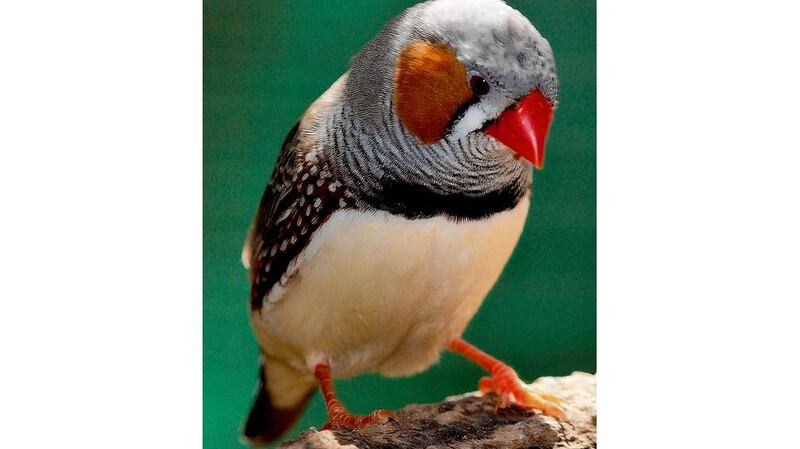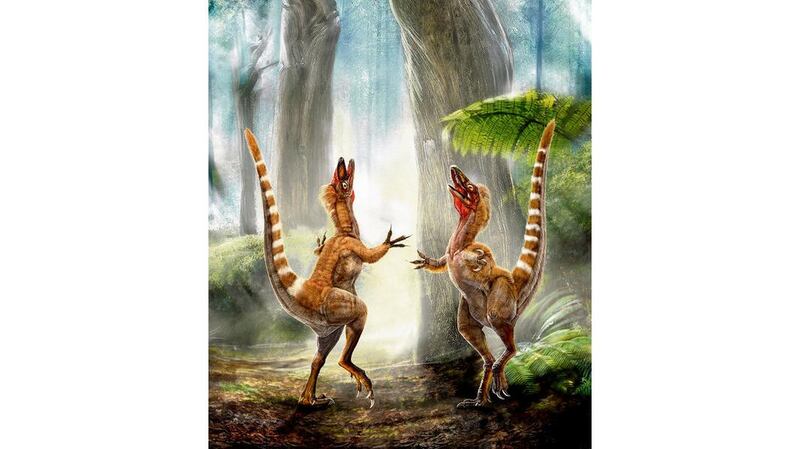SCIENTISTS HAVE found a way to identify the colours displayed by 125- million-year-old feathered dinosaurs. One species in particular was an out-and-out ginger, complete with an orange and white-ringed tail, writes DICK AHLSTROM
In a remarkable piece of detective work, the team, including scientists from University College Dublin, examined tiny fossilised pigmentation structures within the dinosaur feathers.
These structures, melanosomes (see image, far right bottom), give the colours seen in modern bird feathers, but also in mammal eyes. The researchers from China, Britain and Ireland found the dinosaur melanosomes were a complete match with the modern ones, allowing the team to determine fossil feather colour by comparing melanosome shapes.


“It is a proof of concept study,” says lecturer in UCD’s school of geological sciences Dr Patrick Orr, who was involved in the work. “It is technically feasible and it opens up a whole new method to determine fossil colour.”
Details of the research were published online yesterday evening by the journal Nature. The team described how they studied the melanosomes found in the feathered theropod dinosaur Sinosauropteryxand the ancient bird, Confuciusornis.
Both were found in 125 million-year-old rocks dug out of the now world-famous Jehol fossil beds of northeast China. They have provided a rich collection of feathered dinosaurs and ancient birds, but this has also raised much controversy, Orr says.
Disputes have raged as to the true nature of what was found, whether these were real feathers as we understand them and what purpose they might have served. Many of these questions can now be answered by this research, Orr believes.
“Our research provides extraordinary insights into the origin of feathers,” says team member Mike Benton, professor of palaeontology at the University of Bristol.
They could have been used for flight, insulation or display, but having shown the bristle-like structures on Sinosauropteryx are true feathers, and defining their placement, the researchers can now argue strongly that these feathers were for display.
But having shown this the next thing to consider was what colours the animal might have used to attract sexual partners or threaten a rival.
A clue to how this might be done came from earlier research by Yale's Prof Derek Briggs. Originally from Dublin and a winner of the RDS/ Irish TimesBoyle Medal for Scientific Excellence, Briggs showed that he could detect melanosomes in fossilised feathers from China.
“We built on that work and found a way to identify colour,” Orr says. This was no small feat given the fossilised melanosomes measure no more than a micron across. One thousand lined in a row would only be a single millimetre long, he says.
The researchers found both sausage-shaped and round melanosomes and compared these with melanosomes recovered from modern birds. They used preserved zebra finches held by the National Museum of Ireland in its important collection and found identically-shaped melanosomes.
The sausage-shaped ones are associated with dark colours, while the round ones range from rusty red through ginger orange, Orr says. They searched various parts of the Sinosauropteryxfossil and were able to show that it was most likely bright orange, with a ringed white and orange tail.
They could see directly that the feathers – “like a fingernail brush” Orr says – ran across the head and back like a Mohawk haircut, down to the ringed tail.
Now the researchers want to do a full analysis of a complete animal to map colour distribution. This would suggest whether the coloration was more likely for display only or perhaps camouflage.
The research also lends much weight to the already substantial amount of evidence that demonstrates that early birds evolved through a long line of meat-eating dinosaurs that walked on two legs. Nor can there any longer be doubt that the fossilised structures on these animals are true feathers.









